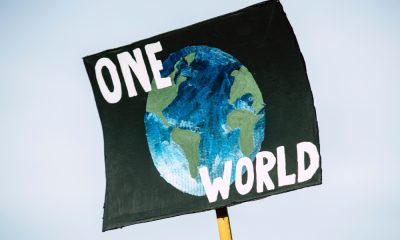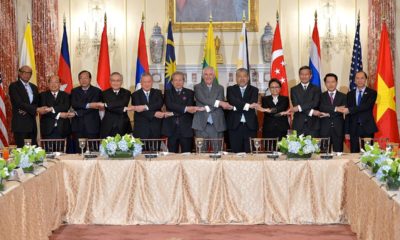Featured
Green Technologies: Why Southeast Asia is the New Global Investment Frontier
According to a report by the United Nations Environment Program, annual green funding flows in Southeast Asia have been estimated at about $50 billion. Huge figures, but still not enough. The Monetary Authority of Singapore estimates that $200 billion of green investment is needed in ASEAN annually until 2030. For this, global interest appears to be growing.

Green technologies are now a priority in Southeast Asia. Lego has started construction of its first zero-emission factory. It will be solar-powered and equipped with an advanced technological system to combine production and emission abatement needs as part of the need to make the energy transition. Where will all this take place? In Vietnam.
The choice made by the Danish toy and modular brick manufacturing giant is not at all unusual. In fact, Southeast Asia is attracting more and more investment. Not only on the general level, with many companies deciding to diversify the Asian presence of their production lines from China to other countries in the region, starting with those in the Association of Southeast Asian Nations (ASEAN) bloc. No, the trend also closely affects green investments.
“The Vietnamese government’s plans to invest in the expansion of renewable energy infrastructure and its collaborative approach to working with foreign companies seeking to make high-quality investments were among the factors behind our decision to build here,” said Carsten Rasmussen, chief operating officer of Lego Group, when the project was announced. With the enactment of Resolution 50 in 2019, the Vietnamese government, moreover, has emphasized the centrality of the role that foreign economic actors and foreign investment play in the pursuit of a long-term development strategy, stressing the need to attract green and hi-tech technologies that add to the production process.
Read more about the importance of green technologies in Southeast Asia and find the most important finance news of the day with the Born2Invest mobile app.
Reducing carbon emissions is a priority for all ASEAN countries
Most members aim to achieve net zero by 2050. Indonesia has committed to achieving this goal by 2060. The region has shown a strong focus on the energy transition, which will also affect the economy. In its “Southeast Asia’s Green Economy 2022 Report,” Bain & Co. estimated that solar and wind power generation will generate $30 billion a year in revenue in the region by 2030. Indeed, the region’s commitment to green energy has gained unprecedented momentum in both the public and private sectors.
As mentioned, this is by no means the only case. International funds and investors have long been active in the region. Danish energy developer Ørsted A/S has started the installation of 3.9 gigawatts of offshore wind turbines in the oceans of Vietnam in 2021.
The renewable energy project will be implemented in three phases with a total investment of $11.9 billion to $13.6 billion. The company will install the turbines 14 km southwest of Bach Long Vy Island in the Gulf of Tonkin and 36 km northwest of Long Chau Archipelago. The turbines will have a hub height of between 150 and 200 meters. Once operational, the wind power complex will be able to generate about 13.7 million MWh of electricity per year.
Also in 2021, U.S. investment giant BlackRock launched a $500 million fund aimed at developing green energy transportation infrastructure in emerging markets, including renewable energy. Primarily involved are the countries of Southeast Asia. Also particularly active are large East Asian companies, all of which are, among other things, committed to gaining key space in the vibrant Southeast Asian electric car manufacturing landscape. South Korea’s Hyundai has launched an innovative offering of sustainability asset-backed securities in Southeast Asia, in line with social and environmental goals.
Green technologies: Private giants and governments involved
Agreements often come at important meetings between major business leaders and political figures from countries in the region. In recent months, the vice chairman of LG Corp. Kwon Bong-Seok met with Vietnamese President Nguyen Xuan Phuc (who has since resigned in February) and presented a plan to invest another $4 billion in the Southeast Asian country after the previous $5.3 billion.
The eye of these and many other large international corporations, even if they operate in different sectors, is always on sustainability. Asia stands on the threshold of a new era of opportunity on the green investment front. The region accounted for more than half of global CO2 emissions as of 2019. Across Asia-Pacific, more than 15 countries and 700 companies have set (or committed to set) emission reduction targets, creating new opportunities for investment in green technologies.
The Southeast also boasts vast natural capital assets that can play a significant role in contributing to net zero, while preserving biodiversity and ecosystem functions. As sustainability is increasingly valued by investors, customers, and employees, the creation of new green businesses could be the key to meeting rising expectations and remaining competitive. The addressable market size for green companies in Asia is expected to reach between $4 trillion and $5 trillion by 2030.
A lot is invested in green technologies, but even more can be done
Above all, there is still huge space to invest in green technologies. According to a report by the United Nations Environment Program, annual green funding flows in Southeast Asia have been estimated at about $50 billion. Huge figures, but still not enough. The Monetary Authority of Singapore estimates that $200 billion of green investment is needed in ASEAN annually until 2030.
For this, global interest appears to be growing. Recently, Nikkei Asia reported that several European manufacturers are considering investing hundreds of millions of dollars in Vietnam to build wind turbine plants. According to the World Bank, Vietnam is considered a potential major player in the sector due to its strong shallow-water winds near densely populated coastal areas.
Japan’s zero emissions initiative
Japan, engaged in a major reorganization of its trade and diplomatic relations, also sees great potential in the region. Tokyo has launched the Asia Zero Emission Community initiative under the auspices of Prime Minister Fumio Kishida’s government. The goal is to foster the green transition of Southeastern countries while forging closer relationships at the political level. Already the first results are being seen: Japanese banks will lend $200 million to Indonesia’s state-owned power company PLN as part of a Tokyo-backed effort to accelerate the transition from coal to renewable energy.
PLN, or Perusahaan Listrik Negara, plans to build no new coal-fired power plants and replace existing ones with renewable energy sources such as solar and geothermal power starting in 2025. The company will use loans from Japan to buy electricity from renewable energy producers and strengthen its grid, as well as support research and development. To meet emission targets, by the way, there is increasing room for technology. Starting with artificial intelligence, smart infrastructure solutions for the power sector can help optimize operations, improve efficiency, increase productivity, reduce risk, and deepen sustainability.
Southeast Asia’s race has also started on the green transition front. Investment in green technologies is following, but there is still untapped potential. Difficult, given the interest shown globally, for them to remain so for much longer.
__
(Featured image by ThuiHaBich via Pixabay)
DISCLAIMER: This article was written by a third party contributor and does not reflect the opinion of Born2Invest, its management, staff or its associates. Please review our disclaimer for more information.
This article may include forward-looking statements. These forward-looking statements generally are identified by the words “believe,” “project,” “estimate,” “become,” “plan,” “will,” and similar expressions. These forward-looking statements involve known and unknown risks as well as uncertainties, including those discussed in the following cautionary statements and elsewhere in this article and on this site. Although the Company may believe that its expectations are based on reasonable assumptions, the actual results that the Company may achieve may differ materially from any forward-looking statements, which reflect the opinions of the management of the Company only as of the date hereof. Additionally, please make sure to read these important disclosures.
First published in StartupItalia, a third-party contributor translated and adapted the article from the original. In case of discrepancy, the original will prevail.
Although we made reasonable efforts to provide accurate translations, some parts may be incorrect. Born2Invest assumes no responsibility for errors, omissions or ambiguities in the translations provided on this website. Any person or entity relying on translated content does so at their own risk. Born2Invest is not responsible for losses caused by such reliance on the accuracy or reliability of translated information. If you wish to report an error or inaccuracy in the translation, we encourage you to contact us.

-

 Biotech2 weeks ago
Biotech2 weeks agoJohnson & Johnson’s Tecvayli Combo Shows Breakthrough Results in Multiple Myeloma
-

 Africa2 days ago
Africa2 days agoMorocco’s Rising Country Risk Profile Boosts Investor Confidence
-

 Cannabis1 week ago
Cannabis1 week agoTrump Signals Historic Shift: U.S. Weighs Reclassifying Cannabis from Schedule I to III
-

 Crypto6 days ago
Crypto6 days agoHyperliquid Proposes Burning $1B in HYPE to Make Supply Deflationary

























